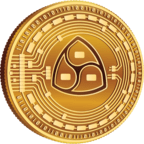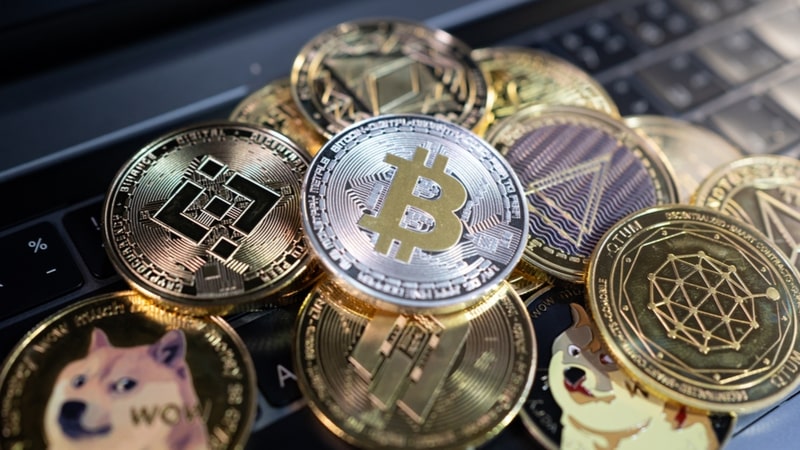The crypto market has shown resilience in 2023 after weathering the storm of crashes in 2022. With regulations on the horizon and adoption growing, crypto enthusiasts are optimistic about new all-time highs.
While the market remains dominated by titans like Bitcoin and Ethereum, many other compelling cryptos aim to garner attention this September.
Top contenders include smart contract platforms like Solana, Cardano, and Polkadot. Privacy cryptos Monero and Zcash provide anonymity. Meme favorite Dogecoin maintains influence. And PoS transition to Eth2.0 lifts Ethereum competitors near the top 10.
With over $1 trillion in crypto market capitalization, there is room for many assets to coexist and thrive. By monitoring developments on the most promising networks, major opportunities await in September.
From DeFi disruption to NFTs, gaming, metaverses and more, crypto innovation continues marching forward. For investors willing to research thoroughly and invest judiciously, the top 10 cryptos offer exposure to this technology-driven evolution in finance and beyond.
While risks always exist in crypto’s volatile markets, the projects leading the pack in September 2023 present compelling cases for adoption and growth.
1. Bitcoin (BTC)
Market cap: $502 billion
Year-over-year return: 28.7%
Fourteen years after its inception, bitcoin remains the dominant force in crypto. Created by the pseudonymous Satoshi Nakamoto, bitcoin pioneered decentralized, blockchain-based transactions and a transparent public ledger. This groundbreaking technology sparked a paradigm shift in digital assets.
Today, bitcoin’s market capitalization tops $400 billion, cementing its status as the most valuable and widely-adopted cryptocurrency. However, bitcoin does face criticism regarding scaling challenges and energy usage tied to proof-of-work mining.
Despite growing competition from faster, more advanced blockchains, bitcoin’s first-mover advantage and name recognition is hard to overcome. The network effects and liquidity pools surrounding BTC also reinforce its dominance.
While some “bitcoin killer” projects have promised to dethrone the king crypto, Bitcoin has persevered as the reserve asset of the crypto world. Love it or hate it, bitcoin remains the standard bearer for cryptocurrency over a decade after its quiet launch.
2. Ethereum (ETH)
Market cap: $195 billion
Year-over-year return: 3.2%
As one of the earliest and most influential altcoins, Ethereum has cemented itself as the second most valuable cryptocurrency behind Bitcoin. Launched in 2015, Ethereum pioneered the concept of smart contracts – self-executing code that powers decentralized apps (dApps) on its blockchain.
With over 1,400 dApps built on it, Ethereum dominates as the most utilized programmable blockchain. And its native token Ether fuels this software ecosystem.
A key milestone was Ethereum’s 2023 transition to proof-of-stake consensus, reducing its environmental impact. But the true differentiator is Ethereum’s functionality for developers.
By innovating smart contract capabilities and Web3 tools, Ethereum attracted the builder community that powers DeFi, NFTs, metaverses, and more. Even as competitors emerge, Ethereum’s first-mover advantage in enabling decentralized software is hard to replicate.
Ethereum’s blockchain redefined what is possible in crypto by going beyond just payments. Its legacy as the birthplace of smart contracts solidifies its status as a pillar of the crypto landscape.
3. BNB (BNB)
Market cap: $32 billion
Year-over-year return: -23.3%
As the third largest cryptocurrency by market cap, BNB holds an intriguing position. Issued by leading crypto exchange Binance, BNB originated as an Ethereum-based token for discounted trading fees.
But BNB has since moved to its own blockchain, evolving into a multifunctional crypto used for payments, DeFi, NFTs and more. The BNB chain operates as a community-driven ecosystem beyond just powering the Binance platform.
However, Binance faced setbacks in 2023 as a SEC lawsuit alleged securities violations, denting its U.S. market share. Still, with its dominant global exchange and broadening blockchain utility, BNB retains significant influence in the crypto sphere.
While critics point to excessive centralization around Binance, BNB’s real-world functionality for traders and DeFi users cannot be denied.
As crypto adoption advances across multiple spheres, BNB remains well-positioned as an enabler of digital transactions and applications. But regulatory hurdles must be overcome for BNB to fulfill its far-reaching potential.
4. XRP (XRP)
Market cap: $26 billion
Year-over-year return: 48.9%
As a top 10 crypto asset, XRP distinguishes itself through its specialized use case – powering fast, affordable global payments via the Ripple network. This positions XRP as a direct rival to legacy systems like SWIFT for cross-border money transfers.
Designed for speed, cost-efficiency and transparency exceeding traditional finance, XRP and its Ledger blockchain aim to revolutionize how value flows across borders.
A major legal victory in 2023 reinforced XRP’s argument that it is more an asset than a security in certain contexts, potentially limiting SEC authority over it. This boosted XRP’s prospects of gaining traction without regulatory burdens.
With Ripple continuing to ink partnerships with financial institutions, the real-world traction of the XRP-powered network keeps accelerating.
While some crypto projects chase hype cycles, XRP stays focused on disrupting a practical but outdated global payments infrastructure. Its specialized use case gives XRP a differentiated edge in the crypto sphere.
5. Cardano (ADA)
Market cap: $8.9 billion
Year-over-year return: -49%
Emerging in 2017, Cardano stands out as a blockchain engineered for advanced capabilities and sustainability. Founded by Ethereum co-creator Charles Hoskinson, Cardano aims to surpass first and second generation cryptos on all fronts.
As a proof-of-stake platform for decentralized apps and smart contracts, Cardano seeks to provide enhanced security, scalability, and efficiency. Its native asset ADA enables transactions and participation in staking to secure the network.
With peer-reviewed open source development, Cardano takes a research-driven approach to building a next-gen tokenized economy. The focus remains on robust, verifiable applications using ADA and its extended capabilities.
While adoption is still growing, Cardano’s evidence-based methodology provides a balanced pathway to realizing its vision. By addressing the limitations of predecessors, Cardano seeks to create an optimized blockchain equipped for mass adoption.
Its bold aim – to create a “financial operating system” for the world – remains in its early stages. But Cardano’s philosophy of combining innovation with scientific rigor gives it major long-term potential.
6. Dogecoin (DOGE)
Market cap: $8.9 billion
Year-over-year return: 1.8%
What started as a joke in 2013 has evolved into one of the most influential meme coins – Dogecoin. Created as a satire of Bitcoin, Dogecoin was never intended to be taken seriously. Yet its approachable vibe and iconic Shiba Inu mascot have propelled it to the forefront.
Celebrity backers like Elon Musk and Mark Cuban boosted Dogecoin’s popularity through viral tweets and advocacy. Musk himself is no stranger to DOGE-related controversy, even facing lawsuits over alleged price manipulation.
But beyond the hype, Dogecoin provides a functional peer-to-peer digital currency and introduction to crypto for the masses. Its passionate community, relatable branding and real-world utility cement its place among the top ten projects.
While some dismiss Dogecoin as a meme-fueled fad, it continues to see surges in adoption. As crypto marches mainstream, Dogecoin’s welcoming and lighthearted ethos positions it for continued relevance.
To many, Dogecoin stands as a gateway into broader crypto participation powered by vibrant online communities. What was once a parody has become a dominant force in the crypto ecosystem.
7. Solana (SOL)
Market cap: $7.8 billion
Year-over-year return: -38.6%
Known for blazing transaction speeds, Solana burst onto the scene in 2020 as an Ethereum competitor supporting dApps and NFTs. By combining proof-of-stake with time-based proof-of-history, Solana achieves unmatched performance.
This innovation comes at a cost – network instability. Frequent outages have plagued Solana, fueling critics who question its reliability at scale. But the need for a faster, cheaper smart contract platform keeps developer interest alive.
Despite chaotically growing pains, Solana’s throughput potential gives it a commanding position in the scaling race. And its SOL token has handsomely rewarded investors, posting triple-digit gains in 2023 alone.
As the quest to blend decentralization with raw speed continues, Solana’s unique formula remains compelling. While maturing its architecture and governance is critical, Solana’s strengths may outweigh its volatility in the long run.
The crypto industry needs a usable, high-efficiency blockchain like Solana. As it works through issues, its speed advantage provides a tempting upside for those seeking a slice of the future.
8. Tron (TRX)
Market cap: $6.8 billion
Year-over-year return: 20.8%
Launched in 2017, Tron set out to decentralize the internet using blockchain technology. With over 177 million accounts, Tron dominates as a hub for dApps and stablecoins.
Powered by its native TRX token and delegated proof-of-stake consensus, Tron operates a high-throughput blockchain tailored for digital entertainment. By enabling direct creator-to-consumer distribution, Tron focuses on transforming gaming, gambling, and media.
However, Tron suffered a setback in 2023 when the SEC charged founder Justin Sun with violations tied to its 2017 ICO. Despite this regulatory action, Tron continues growing its decentralized entertainment ecosystem.
By bridging blockchains and creative content, Tron carved out a niche spotlighting its specialized strengths. Questions around centralization linger, but Tron’s platform capabilities persist in catering to its core use case.
As blockchain utility expands, entertainment-focused chains like Tron will play a role in shaping decentralized models for creative distribution and monetization. Though regulatory hurdles are now part of its storyline, Tron’s original vision remains intact.
9. Polkadot (DOT)
Market cap: $5.3 billion
Year-over-year return: -41%
Emerging in 2020 from Ethereum co-founder Gavin Wood, Polkadot aims to fuse disconnected blockchains into one universal network. This interoperability enables seamless transfers of value and data across various chains.
Powering this vision are specialized parachains – customizable parallel blockchains that link to the main Polkadot chain. By offloading processing needs to parachains, Polkadot achieves scalability.
Polkadot also pioneered nominated proof-of-stake, where nominators back validators they trust to secure the network. This governance model incentivizes good behavior.
As crypto networks proliferate, the ability to communicate cross-chain becomes increasingly vital. Polkadot positioned itself at the forefront of connecting blockchains previously confined to silos.
Despite its technical complexity, Polkadot provides the infrastructure to make blockchain interoperability a reality. As the technology matures, seamless chain-to-chain transactions will be critical – and Polkadot aims to lead the way.
10. Polygon (MATIC)
Market cap: $5 billion
Year-over-year return: -38%
Polygon is a platform that was launched in 2017 to connect and grow ethereum-compatible blockchains and related projects. Polygon was created to help the ethereum network’s scalability problems by handling transactions on a unique, ethereum-compatible blockchain. The Polygon network uses a modified proof-of-stake consensus mechanism to verify transactions. MATIC is the project’s native cryptocurrency and is used to secure and govern the network. Network users receive MATIC as a reward for staking their holdings to help validate transactions, and users also use MATIC to pay network transaction fees.
LATEST POSTS
- Binance Coin Rises in Market Cap Rankings After Surpassing XRP
- X2 Token Sees Brief Price Spike Before Sharp Decline, Raising Concerns Over Sustainability
- The Sandbox(SAND) and Chainlink(LINK) See Gains, While Newcomer Pomerdoge Aims for Bigger Returns
- SmarDex (SDEX) Explores Innovations in DeFi With Multi-Chain Expansion
- Large Transactions Seen in Uniswap (UNI) – What Could This Mean?


